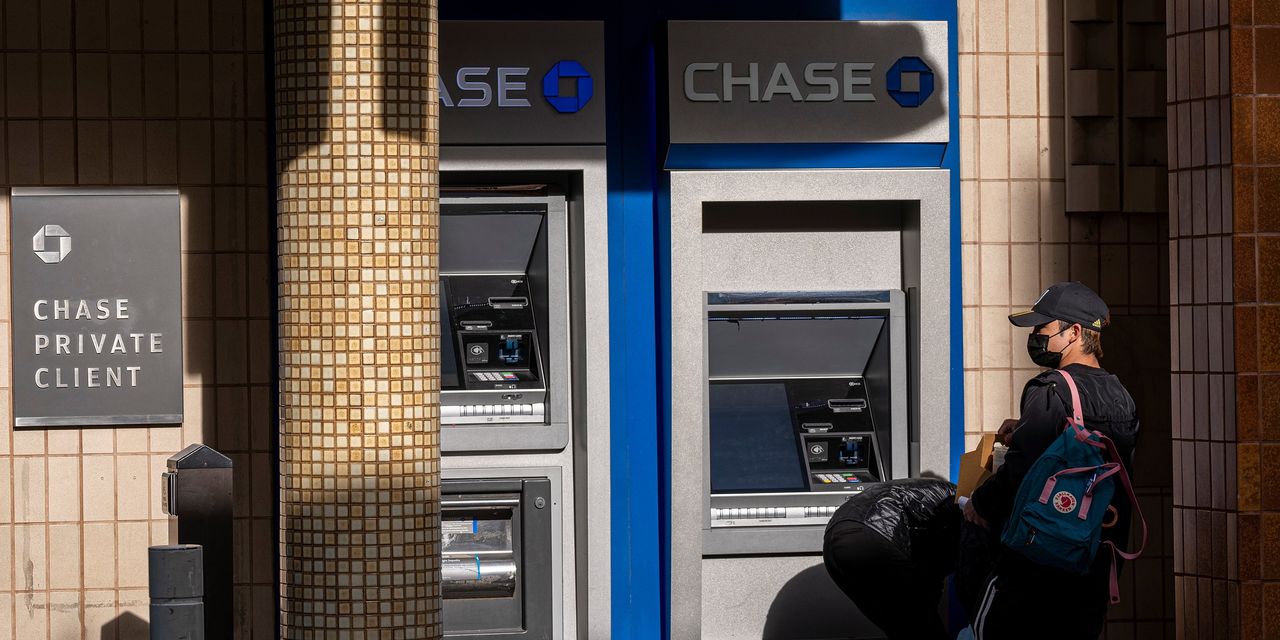The economic recovery is looking good for the biggest U.S. banks.
Major players such as
JPMorgan Chase
JPM 1.43%
& Co. and
Citigroup Inc.
C 1.45%
are expected this week to report second-quarter profit gains, a U-turn from a year ago when they were girding for a wave of Covid-19-related loan defaults.
At the same time, there are obstacles. For example, the trading businesses that thrived in the chaos of the pandemic are slowing down.
JPMorgan
JPM 1.43%
and
Goldman Sachs Group Inc.
report results Tuesday, followed by Citigroup,
Bank of America Corp.
and
Wells Fargo
& Co. on Wednesday.
Morgan Stanley
releases results on Thursday.
A year ago, banks were socking away billions of dollars to prepare for soured loans. But as the economic outlook has brightened, banks have started releasing reserves, boosting their earnings. Banks could report second-quarter per-share profits that are 40% higher than the same period a year ago, according to analysts at Keefe, Bruyette & Woods.
However, the trading boom that powered banks through the pandemic wasn’t repeated in the second quarter. Citigroup and JPMorgan executives have said trading revenues would be down 30% or more compared with a year ago. That could amount to losing about 10% of total revenue at each bank.
“We believe that this summer represents the acid test for whether normalized trading levels will be higher than pre-pandemic,” Goldman analysts wrote.
Loan demand has been tepid, and low interest rates have dampened the profits that banks can make when they do lend. The industry’s net-interest margin, a key measure of lending profitability, hit a historic low in the first quarter, and analysts expect roughly the same for the second quarter.
Rising interest rates and increased lending, particularly to consumers, would provide a double-barreled lift, but it is still unclear when either will happen. Autonomous Research is predicting 2021 net-interest income declines at the big banks, noting executives “have recently been moderating their expectations (without completely giving up hope).”
Banks have plenty of money to lend—more than enough, in fact. Many companies are still hoarding cash, and there is now $17 trillion in deposits at U.S. commercial banks, according to data from the Federal Reserve. That is up nearly 30% since the start of 2020, or $3.8 trillion, equal to the size of the whole pot in 2001.
The excess cash is dragging down margins because banks aren’t earning much on it. Barclays PLC analysts estimate average pretax profits would be 5% higher if that excess cash could be put to work at better interest rates.
The biggest banks shelled out money during the depths of the pandemic to waive customer fees and get employees set up to work from home. Now they are trying to reel expenses back in.
Bank of America Chief Financial Officer
Paul Donofrio
said on the first-quarter earnings call with analysts: “We’re sitting here in the middle of a pandemic with a lot of Covid expenses that have been a little bit more sticky than we had all hoped, but they’re going to come out. There’s no question about that.”
The KBW Nasdaq Bank Index has risen 27% in 2021, topping the S&P 500’s 16% increase. Where the bank-stock rally goes from here will depend partly on how much banks lift their dividends and buy back their shares. The Fed had limited shareholder returns during the pandemic, but removed restrictions at the end of June. The six biggest banks collectively have already raised their per-share dividends 40% for the third quarter and some announced new buyback programs, but additional details may surface in earnings reports.
SHARE YOUR THOUGHTS
What do earnings reports reveal to you about the recovery from the pandemic? Join the conversation below.
Write to Ben Eisen at ben.eisen@wsj.com and David Benoit at david.benoit@wsj.com
Copyright ©2020 Dow Jones & Company, Inc. All Rights Reserved. 87990cbe856818d5eddac44c7b1cdeb8













































